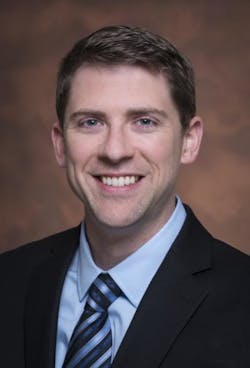Healthcare providers that provide direct patient care have long recognized that social and economic factors have a significant impact on the health of an individual, and the health of populations, yet it has only been in the past few years that healthcare organizations have started to formalize an approach to addressing social determinants of health, such as food insecurity, housing, transportation and literacy.
These efforts to focus more on the upstream factors that influence patients’ health are occurring in parallel to the healthcare industry’s ongoing transition from fee-for-service to value-based care and payment models, as patient care organizations look to improve health outcomes and reduce costs. For health systems, moving beyond facility walls to collect and incorporate social determinants data into community level programs represents the next phase of population health management strategy.
“Healthcare providers have known for a long time that social determinants are incredibly important, but there hasn’t been, in a regular fee-for-service model, an incentive for healthcare organizations to partner with community-based organizations,” says Robert Fields, M.D., senior vice president and chief medical officer for population health at the New York City-based Mount Sinai Health System. “When you start to get paid on outcomes and reductions in total cost of care then it makes it financially reasonable to invest upstream into infrastructure and preventive care. Many times, that preventive care looks a lot like closing social determinants gaps to avoid the downstream cost. The economics are changing.”
Robert Fields, M.D.
Indeed, a report from the Deloitte Center for Health Solutions based on a survey with hospital officials about their efforts to gather and analyze social data about their patients found that there was a high correlation between health systems that were screening for social determinants and those that were involved in at-risk payment models and were already pretty far along in their journey to value-based care.
What’s more, researchers at the University of South Florida (USF) College of Public Health, Tampa, and WellCare Health Plans found that healthcare spending is substantially reduced when people are successfully connected to social services that address social barriers. The researchers’ study, which assessed the impact of social services among 2,700 Medicaid and Medicare Advantage members on healthcare costs, reported an additional 10 percent reduction in healthcare costs—equating to more than $2,400 per person per year savings—for people who were successfully connected to social services compared to a control group of members who were not.
Healthcare leaders engaged in these efforts have found that health IT is foundational to this work in the collection of social determinants data as well for data exchange across the care continuum, workflow integration and analytics to risk stratify the highest-need individuals. Leading hospitals, medical groups, and health systems, as well as accountable care organizations (ACOs) and health insurers are moving forward in this work with a number of different approaches.
Early Efforts to Capture SDoH Data
At Rush University in Chicago, clinical and IT leaders developed a social determinants of health screening tool within the electronic health record (EHR) to combine with clinical registry data. Rush University Medical Center leveraged the NowPow platform and integrated it into the workflows of the primary care physicians and frontline staff, according to Michael Hanak, M.D., associate chief medical informatics officer at Rush University.
After the provider completes the patient intake process, the Rush EHR combines the social data with the medical history into a patient profile that it sends to NowPow. The software queries the company’s database of local community resources to identify where patients can receive needed services. NowPow then provides a curated list of resources and services — called a HealtheRx—that matches the patient’s needs. The technology enters the HealtheRx in the patient’s medical record, sends it to the identified community-based providers, and emails and/or texts it to the patient.
Michael Hanak, M.D.
“This is a gamechanger for population health,” Hanak says. Clinical IT leaders are collecting the social data and using that to risk stratify patients. “That’s helpful when we look at our patients who are in managed care contracts, so we’re applying wraparound services to our higher-risk patients and the social determinants screening is part of that.”
Hanak says patient navigators used the tool to screen patients who were no-shows for doctor’s appointments. “We found that nearly one-third of these patients who had missed a visit had a social need that we could assist with. Our hope is that we see that actually improves adherence to visits and engagement with care,” he says.
Clinicians at the University of Arkansas Medical Sciences (UAMS) Medical Center in Little Rock are prompted by their EHR to ask patients questions about their personal life regarding their financial situation, drinking habits, social isolation and domestic abuse as part of the hospital’s efforts to standardize the collection of social needs data. Stephen Mette, M.D., the medical center’s chief clinical officer, says clinical and IT leaders began an effort about two years ago to embed these questions in the EHR as part of a larger mission at UAMS to systematically address social health inequities that create health disparities.
Stephen Mette, M.D.
“Technology is wonderful in that it allows us to have ready access to data, and the ability to analyze the data and package the data in useful ways to allow the data to be used to inform clinical decisions by providers,” he says, although he adds that the accuracy of data and the availability of data to providers continue to be challenges. “But, we’re much further ahead than we were a few years ago because of our data systems.”
Bradley Hunter, research director at Orem, Utah-based KLAS Research, says health information exchanges (HIEs) are well-positioned to play a vital role in these efforts by bridging gaps between the healthcare and social services sectors. In fact, the Strategic Health Information Exchange Collaborative (SHIEC) recently established a Social Determinants Committee, with the core aim to help SHIEC better focus on identifying and linking social determinants of health data and to overcome challenges for data exchange between health and social service entities.
Leveraging SDoH Data for Population Health Efforts
Health insurer Humana is actively addressing social determinants of health as part of its Bold Goal initiative, with a goal of improving the health of the communities it serves 20 percent by 2020. Measuring progress using the U.S. Centers for Disease Control and Prevention (CDC) population health management tool known as Healthy Days, Humana found that implementing community-level changes has led to positive health outcomes for elderly beneficiaries with heart disease, diabetes, respiratory conditions and other chronic diseases. For example, individuals in Humana’s San Antonio Bold Goal community saw a 3.5 percent improvement in Healthy Days and Knoxville participants saw a 5.4 percent improvement.
Many integrated health systems such as Kaiser, Partners, Intermountain and Geisinger also are at the forefront of these efforts.
As a participant in the MassHealth (Medicaid) ACO, Boston-based Partners Healthcare is required to screen Medicaid ACO patients for social determinants factors and has integrated that process into its primary care practices.
“It’s not just screening for screening’s sake,” says Rose Kakoza, M.D., assistant medical director for Medicaid for the Center of Population Health at Partners Healthcare. “We’ve been very thoughtful to think about, as we screen for social determinants of health, we need to make sure we have the appropriate resources in place to manage the needs that come to light as a result of that screening.” To address this, the organization deployed parallel care management strategies and increased its staff of community resource specialists and social work support.
Partners also worked with its eCare team (eCare is the organization’s enterprise-wide Epic EHR) to map the positive screening results to ICD-10 codes, enabling clinical leaders, for the first time, to track unmet social needs in a systematic way. The next phase, Kakoza says, is to integrate a platform into the EHR to track whether the referral loop was closed.
Danville, Pa.-based Geisinger Health System also is further along on this path with an innovative initiative, called Fresh Food Farmacy, that aims to address food insecurity, as a significant social factor impacting health, and to improve patients’ diabetes management. Geisinger’s Fresh Food Farmacy provides fresh, healthy food to diabetes patients, at no cost to the patients. The health system initially launched the program in July 2016 as a pilot project at Geisinger Shamokin Area Community Hospital in Coal Township, in Northumberland County, which has the second-highest rate of long-term diabetes complications in central Pennsylvania.
Project leaders have seen significant improvements in clinical outcomes for patients enrolled in the Food Farmacy program, to date. Robust data analytics plays a critical role in the success of the project, says Andrea Feinberg, M.D., medical director of Health and Wellness at Geisinger Health and the clinical champion of the initiative. “The data analytics is huge; we have an incredible dashboard that we use and it tracks what’s going on with the patients and the program. Without that, we would not be able to support the work that we’re doing,” she says.
At New York City-based Mount Sinai Health System, leaders of the organization’s ACO, Mount Sinai Health Partners, are working with Lumeris, a St. Louis-based health plan and managed services vendor, to use its analytics platform to identify the social needs of its 400,000 members, connect them to community resources and then risk stratify patients for further intervention. IT leaders also are working to integrate the social determinants care plan and the workflows into its health IT systems.
According to Fields, Lumeris’ platform leverages publicly available data, such as census data, and also purchases social determinants data, like credit agency data, and then combines that with claims data, and the runs the data through artificial intelligence (AI) and machine learning to come up with predictive modeling for patients at risk of hospital admission. Fields led similar successful efforts at Asheville, North Carolina-based Mission Health Partners, what he calls a “heavily social determinants-driven” Medicare ACO affiliated with the Mission Health healthcare system.
“With this predictive modeling, I can tell you with a relatively high degree of certainty, for any of our attributed lives, the risk of a patient ending up in the hospital for an unplanned admission within the next 30 days, which is amazing, to think about, being able to look upstream,” he says. “As a provider or a care management entity, if you knew that a specific patient was going to end up in the hospital, what would you do differently? Probably a lot. That’s what we started to work with at Mission, and now we’ll be working here at Mount Sinai, using that predictive model to start prioritizing patients to figure out who might need outreach and what kind of outreach that might be.”
He also notes that analytics, and specifically predictive analytics, are critical components to this work. “Any ACO or any participant in value-based care has a set amount of resources, they are not unlimited.
What analytics allows you to do is really identify those patients that are likely to have a bad outcome or lead to high cost, ideally before that happens, and then, of those patients that are likely to have a bad outcome, who is likely to benefit from what specific social determinant need. To the degree that analytics and predictive analytics can start to identify those for you, it saves hours of potential evaluation and assessment of the patients in your population. And the efficiency that will come from that is pretty unbelievable,” he says, adding, “Both predictive analytics and risk stratification are incredibly important to be able to identify and then prioritize the patients.”
Challenges to Addressing SDoH
The Deloitte Center for Health Solutions study on social determinants of health within healthcare systems found that there is strong interest, but lack of funding and little measurement of impact.
According to the report, 80 percent of the people surveyed said, yes, social needs are a core part of our mission. Seventy-two percent said they don’t have sustainable funding to do it. In an interview with Healthcare Informatics Contributing Editor David Raths about the report, Josh Lee, a principal in the firm’s Healthcare Provider Strategy Practice, said, “That is in many ways a heartbreaking mismatch. They are saying ‘we know this should be part of our mission, but we really don’t know how we can pay for it.’ Forty percent felt they were doing something in this regard, but had no way of measuring whether it was working or not. Those three numbers—80, 72 and 40—tell the story.”
Mount Sinai’s Fields also notes that operationalizing this work continues to be very challenging as addressing social needs is still based on having a relationship with the patient. “Even with all the technology in the world, it’s still challenging to develop operations that can actually make an impact and engage with patients in this work. It requires a great deal of sensitivity and whole lot of patience to engage with patients in this work.”





